Into the tsunami zone
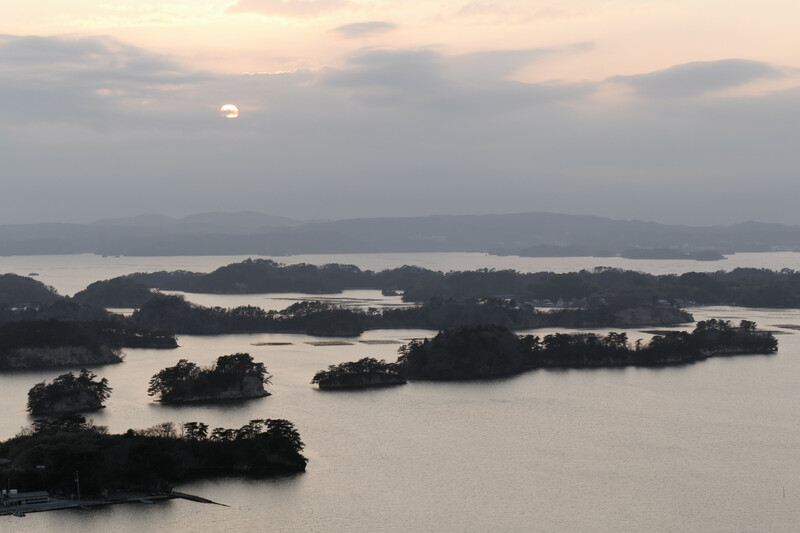
Sunset over Oku-Matsushima (seen from Mount Otakamori) |
The March 2011 earthquake and tsunami must be one of the most widely reported stories ever, so does the world really need another account? When we decided to go to Hiraizumi I noticed that the area worst hit by the tsunami was just next door. Naito-san suggested that we go, but I felt unsure about it. I admit I wanted to see for myself, but at the same time it felt ghoulish to go there to stare at the destruction like some tsunami tourist.
Naito-san's response was that not only should we go, but I should blog about it, too. People in this area used to have tourism as a major source of income, but following the tsunami that's fallen off sharply, and they badly need it to come back. That's actually one major reason why I've been writing these blog posts about the Japan trip. I don't know if it's really going to make anyone go there, but at least I've done what little I can.
Seeing the area is a deeply odd experience. Most of the coast shows little if any trace of damage, and then you round a corner, to discover that what you thought was an empty sandy plain is actually all that remains of a small fishing town. Well, unless you count the vast hills of debris currently being loaded onto trucks by excavators and carted away. It's worth stopping for a moment to consider that a full 13 months after the tsunami, the debris left to be removed in just the little town of Nobiru must have run into the millions of tons.
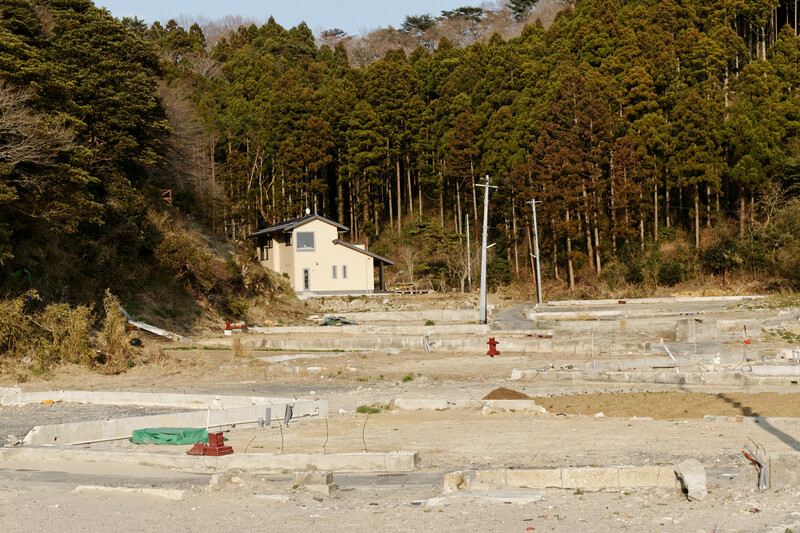
Destroyed village |
We went to an even smaller village on the edge of the island. One house remained (or had been rebuilt), otherwise everything was gone. Well, nearly everything. A sign on stout steel poles had been slammed right over into the ground, leaving the poles twisted like spaghetti, and the foundation still in place. Some of the tarmac on the quay had been ripped off to sail around in the water before finally coming to rest on top of a corrugated steel roof and some palm leaves. A refrigerator lay in the sand, covered in dead starfish.
In Nobiru, two buildings made of reinforced concrete were left by the road. I could tell the concrete was reinforced, because one of them had been neatly sliced in half, leaving the iron bars sticking out of the shattered concrete. Reinforced concrete buildings were previously thought to be tsunami-proof, but clearly this was not so. Down on the public beach I was enjoying the cliffs and the view, when I looked down to see the CD player from a hi-fi set at my feet. No related debris in sight. The wave must have smashed up someone's house, sucked out the contents, and distributed them over a huge area.
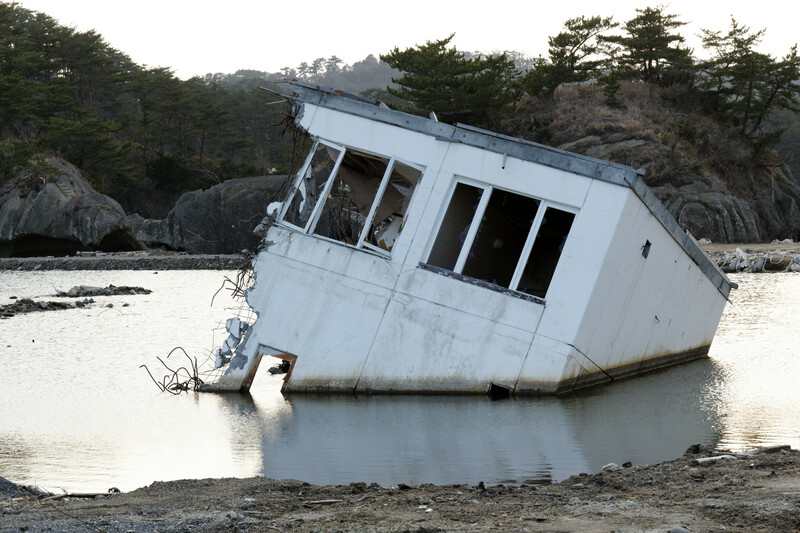
Broken building |
Walking around in all this was a bizarre experience. The devastation seemed so matter-of-fact, like a newspaper on a doormat, or someone walking his dog. When I stopped to think about it, what I saw spoke of immense destruction and suffering, even death on a massive scale. Especially when I remembered that it looked like this all along the coast for a couple hundred kilometers as the crow flies. But just looking at it all I saw was some piles of rubble and a CD player on a beach. Even so it was as though someone had hit me over the head; I walked around in a total daze, not knowing what I was thinking or feeling.
Even driving there was strange. From Matsushima to Nobiru, everything looked fine. Then Nobiru turned out to be smashed to bits, and the waters around it littered with trailers, construction equipment and unidentifiable objects. Then we climbed over a small hill into a picturesque little fishing village, seemingly undisturbed, except for the diesel power generators dotted around the village.
We were staying in a little minshuku that was really just a traditional fisherman's house, somewhat extended to accomodate guests. It was quiet, idyllic, and deeply Japanese. It was run by a husband and wife, the husband a fisherman, so dinner would be whatever he caught. As in the ryokan, that turned out to be more little seafood dishes than I could count, again to be combined in non-obvious ways.
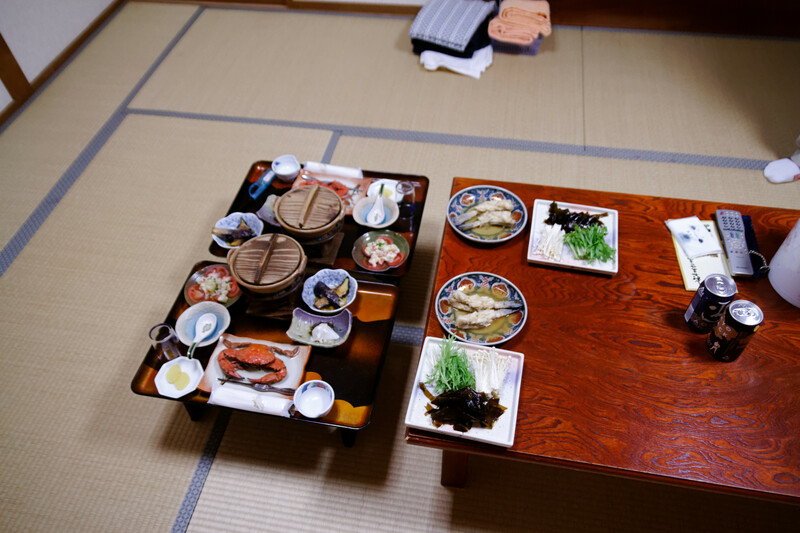
Dinner |
Before dinner we had time for a quick climb of Mount Otakamori, to see one of the famous views of Matsushima Bay from the top at sunset. From the top we could see the beaches, the islands scattered in the bay, and the sun turning the sea into shimmering gold. From up there it was easy to see why Oku-Matsushima had once been a tourist spot.
Checking out in the morning I told the landlady, via Naito-san's interpretation, that I'd enjoyed my stay, and that I wished them luck. I think Naito-san also said something about photos and blogging. The landlady hadn't been very talkative before, but now it was like a dam bursting, and she launched into a thirty-minute speech in Japanese. She never showed much direct emotion, but it was clear that the feeling was there, just below the surface.
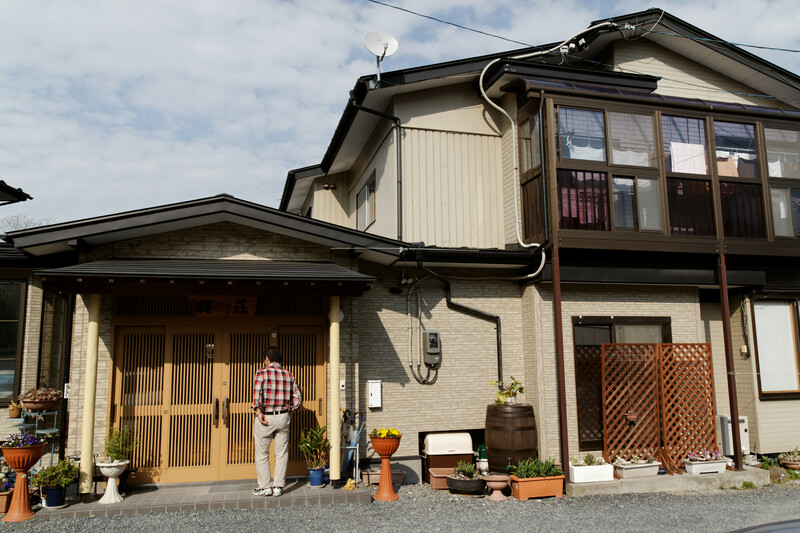
The minshuku |
Afterwards, Naito-san explained that the earthquake had just about destroyed the minshuku, and that the owners had given up trying to rebuild it. Wanting to give up may seem odd, but consider the situation. There's no water, no electricity, the house is destroyed, and the roads are gone. Not only is the house destroyed, but so are cups, TVs, plates, and furniture. The entire area is a disaster zone, and the only things tourists associate with it is death and destruction. Essentially they'd have to build a new minshuku, and the situation was not exactly looking good.
However, the workers coming to the island to clear up and reconstruct wanted somewhere nice to stay, and they persuaded the owners to set up the minshuku again. The workers helped them rebuild, and it turned out the other guests we'd seen were the reconstruction workers, now staying there as guests. When arriving the day before we'd had to wait a little to check in, because a big cardboard box had arrived by mail at the same time. We now learned that this was crockery, sent as a gift from a previous guest wanting to help.
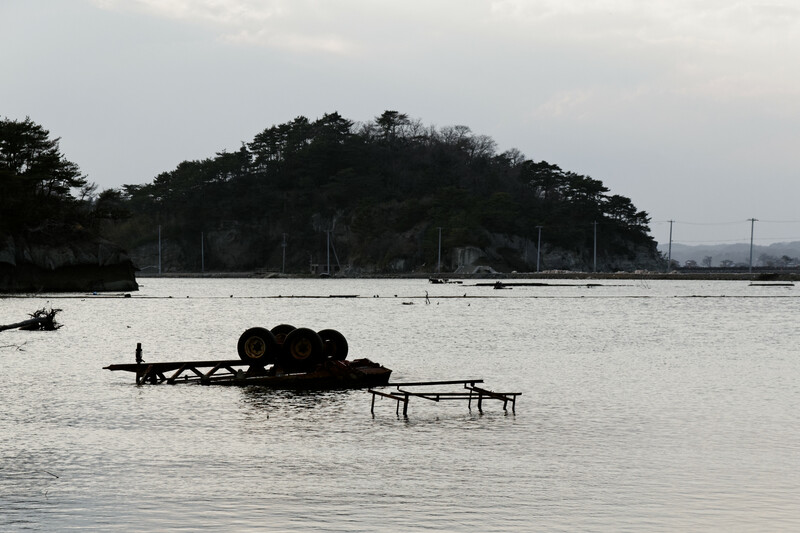
Lagoon with debris |
After the tsunami her husband had been unable to fish, because not only was most of the infrastructure for delivering fish gone, but the water was also so full of debris that he couldn't use his nets. In fact, our dinner the day before had been his first catch since the tsunami. In other words, it had taken more than a year for the water to clear enough for fishing.
Of course, having avoided the tsunami, this couple was relatively lucky. The day before we'd driven past a camp where hundreds of people were living in little containers. In a corner of the camp were some toilet containers and showers similar to those you see at music festivals. Naito-san told me that where these people would move to was still being debated, because most of them wanted to move back to where they'd lived. They'd lived in very closely-knit communities of neighbours, and preferred risking another tsunami to losing their friends by resettling elsewhere.
After thanking the landlady one more time, we got in the car, leaving them to the task of rebuilding their business. We drove back to Shiogama in silence, trying to digest what we'd seen.
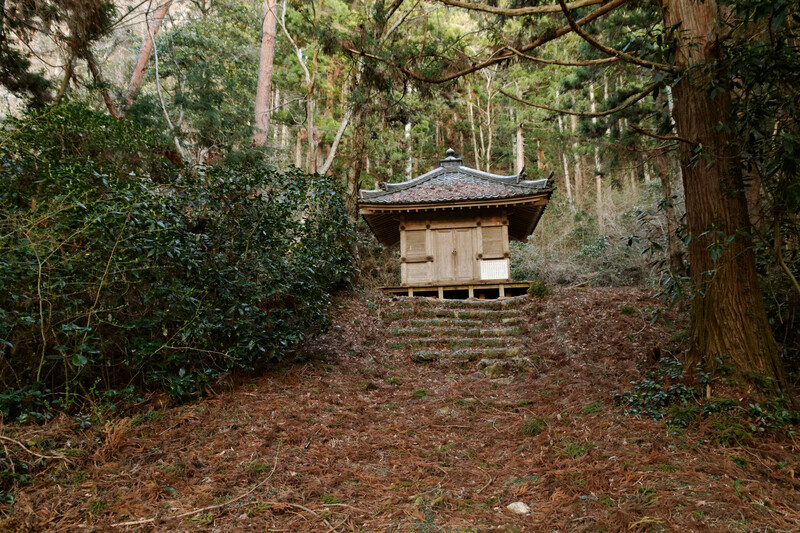
Forest shrine, Mount Otakamori |
Similar posts
Shiogama, sushi city
We really came to Shiogama because we happened to be passing by on our way from Matsushima Bay to Sendai
Read | 2012-11-09 16:17
Comments
Trainor-san - 2013-01-04 08:43:35
Thanks for sharing this touching story. Please give my regards to Naito-san.
Simen Sommerfeldt - 2013-01-04 11:28:00
As eloquent as always. And food for thought
Motomu Naito - 2013-01-08 10:34:40
It is a wonderful effort, thank you very much. I will inform about this article to the landlady.
Let's revisit there someday again. Let's also do the continuance of the trip of Oku no Hosomichi (The Narrow Road to the Deep North).
Shasta - 2016-04-11 15:08:46
Thank you for sharing. We are considering visiting the area you're writing about and it's helpful to find information in English for direction. I experienced some negative reactions when searching for this information, but as you say, the area is still in need of their tourist industry to return. We are interested in learning about the continuing challenges for the region in 2016 and plan to spread the word as best we can as well. Thanks again!